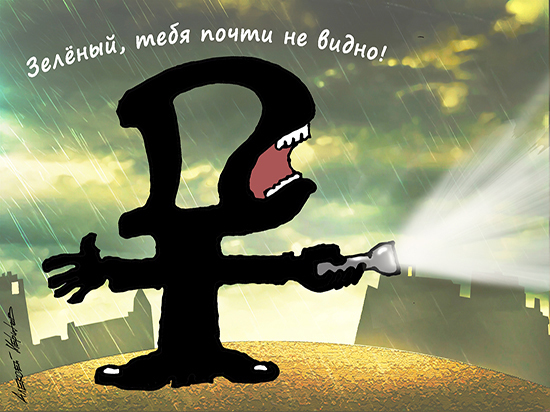Ban on currency: what will happen to the turnover of dollars and euros in Russia
[ad_1]

Experts spoke about the ways in which foreign banknotes enter the country today
For more than seven months, Russia has been living under Western sanctions, many of which were aimed at the financial system of our country. One of the painful ones – both for the domestic economy as a whole and for citizens – was the decision to ban the import of cash into Russia. The EU was the first to ban the euro. Since March 9, the United States has also limited the possibility of sending cash dollars to the country. Nevertheless, both American and European banknotes continue to flow into our country. Through what channels this happens today and whether their flow will dry up if the sanctions intensify, experts told MK.
Despite the effect of Western sanctions prohibiting the import of cash dollars and euros into Russia, citizens still have the opportunity to buy and sell this foreign money – largely thanks to the balanced work of the Russian banking system. In the period before the sanctions, the Central Bank and financial institutions regularly imported cash foreign currency into the country. For example, in 2021, $16.24 billion and about 8 billion euros were imported. Is it a lot or a little? The question is debatable – previously the trend was set by purely financial factors: in particular, the decline in cash turnover on a global scale. For comparison: in 2020, almost 20% more dollars and euros were imported into Russia than in 2021.
But even after the introduction of bans in March, there is still a currency inside Russia. Recall that at the end of August, the Central Bank of the Russian Federation even expanded the possibilities of banks to sell cash dollars and euros to the population. The regulator allowed the sale of currency received by banks after April 9, 2022, not only from individuals, but also from other sources. So where does it appear on the territory of the Russian Federation? “One of the main channels through which dollars and euros enter our country today is the sale of goods for export for euros and dollars,” says Andrey Morozov, president of the Eurasian Business Alliance. “Money goes to corporate accounts opened in foreign banks or in Russian ones that have not been sanctioned, in dollars and euros, respectively.”
Also, one should not exclude a large flow of dollars and euros that come here with vacationers, business trips, visiting foreigners. Of course, those now became much less than a year ago. But this trickle has not dried up either: after all, even if we recall the Soviet era, even then, against the backdrop of criminal articles, currency was brought in, it was traded by currency shuttle traders, and this was quite common. And according to the Border Service of the Federal Security Service of Russia, in January-June 2022, Russians made 8.5 million trips abroad, which is 25% more than in the same period last year. The weather was made by several accessible directions – Armenia, Kyrgyzstan, Turkey, Finland, Egypt and some other countries.
The third source is the cash kept in the hands of citizens, the very ones “under mattresses” and in safes. “Russians kept all their savings in dollars for quite a long time, and a little less in euros,” says Morozov. “Today, about 80% of the savings of Russians are in these currencies, despite the fact that recently the flow of people wishing to sell currencies in banks has increased.” Recall that the Bank of Russia rightly considered the population to be the main holder of the “paper currency”. In the spring, the regulator estimated the amount of foreign currency in the hands of citizens at $90 billion. By the fall, estimates had grown. So, for example, the head of the analytical department of the BKF bank, Maxim Osadchiy, claims that the total amount of cash in Russia has already reached almost 100 billion in dollar terms, that is, it has grown by $10 billion. The bulk of the money is in enterprises and citizens. Their volume is 86.4 billion rubles – this is a historical maximum. “As a result, there is a sufficient supply of cash dollars and euros in the country, and under the conditions of sanctions, the demand for it is small, and these currencies are no longer suitable as a diversification of savings due to their “toxicity,” says an expert from the Strategic Research Department at Total Research Gleb Finkelstein.
Meanwhile, new barriers may arise in front of dollars and euros on the territory of our country. After the referenda on the entry of four new regions into the Russian Federation, there was a threat of Western sanctions against the National Clearing Center (NCC) – the settlement structure of the Moscow Exchange. “The main threat here is the termination of organized trading on the foreign exchange exchange. But even in this case, nothing critical will happen, trading will most likely be transferred to the over-the-counter market,” Finkelstein believes. Similar experience already exists in other countries, where settlements take place in an over-the-counter format based on bank quotes or real transactions with clients.
At the same time, it should be understood that the dollar and the euro will not stop flowing into Russia even in the event of tougher sanctions. Even in the days of the Soviet Union, trade was carried out in dollars and euros – you can remember such stores as Beryozka, where they bought goods for dollars or coupons, which received travel allowances when they returned those dollars, Morozov said.
Newspaper headline:
Russia will not remain without dollars and euros
[ad_2]
Source link






